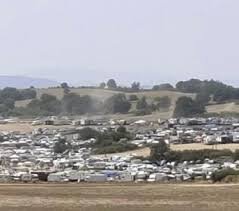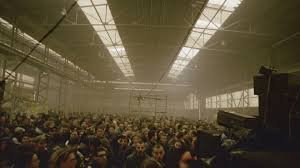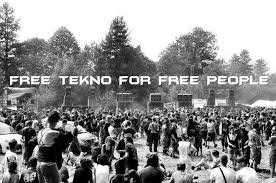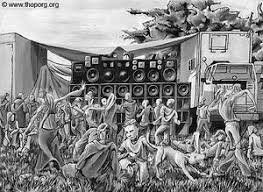
In Viterbo the party is over. On the sixth day of illegal partying, the police intervened to dismantle the rave that had attracted thousands of people from all over Europe to Valentano. But what exactly is a rave? Free parties have their roots in the 1980s, self-managed music events where the music beats to a rapid rhythm - mainly tekno, techno, goa, acid house, jungle, drum & bass or psy-trance - between artists' performances. The word comes from the verb 'to rave', meaning to get excited, to go wild.

Valentano - the stage for the latest Italian event - is a town of less than 3,000 souls, surrounded by the peaks of the Apennines. The choice of location often falls on large open spaces, such as fields, quarries, woods and forests or within abandoned industrial areas. While in the Viterbo area the curtain fell on the sixth day, in general the duration is variable and can extend beyond a week, as well as fade away in the space of a single night. In the spaces hosting the events, dynamics different from those imposed by the economic, administrative and institutional instances that govern everyday life are established. This is why they are often unauthorised and are accompanied by various civil, administrative and criminal offences.

"In an interview with Vice, Pablito El Drito, author of the book Rave In Italy, says: "We'd all read Hakim Bey's TAZ, Zone Temporaneamente Autonome, an underground bible that argued that the most effective way to escape social control was through the temporary appropriation of space. Also, going to a rave was a way to explore the city, to see post-industrial suburbs you would never pass through. To tell the truth, sometimes you were so stoned that you got lost and found yourself in a fairground, but you still had the distinct feeling of living in a metropolis.

It is difficult to identify the first rave party in history. The figure of the ravers is linked to the 1980s and the birth of electronic music. In Chicago they began experimenting with techno evolutions of old soul and funk music, raising the bass level and increasing the bpm. The locations of the first parties were abandoned factories in the US metropolises, and then migrated to Europe. Britain, above all, where one of the most famous raves in history took place, the one in Clink Street in 1988.

Not only Clink Street is worth mentioning. Also England, 25th June 1989. Twelve thousand people gathered on the runway in White Waltham, letting the police believe that a new Michael Jackson video was being filmed. The media will talk about the event as a 'new threat to British youth'. And again: in Castlemorton in May '92, 50,000 people danced for a week. The Spiral Tribe, a tekno sound system, were arrested and acquitted after two years in what became a landmark trial for the rave generation. 1994 saw the arrival of an 'anti-rave law'.

Italy, too, has many symbolic events in its history, not just the last one in Valentano. On 9 June 1999, tens of thousands of people gathered in Tuscany. In 2007, 50,000 people danced in Pinerolo, in the province of Turin. In the same year, 10,000 chose Salento, Casalabte, for a two-week party. We are far from the golden age, the rave seems to be a fashion and for many it no longer retains the spirit of the past. But the rave is not dead yet, on the contrary, says Tobia D'onofrio - author of the book 'Rave new world' - in an interview, "it is alive and well":
"Theresa are still beautiful raves, not all of them of course. Many of the old guard are now working at festivals around the world. Young people, on the other hand, are increasingly thirsty for illegal parties. Unfortunately, it is sometimes necessary to explain to them that they should not post their rave videos live on Facebook. The advent of digital technology has also wiped out the thriving market for self-produced vinyls and cassettes. One limitation of many of today's parties, perhaps, is that the tried-and-tested format is a sort of upgraded version of the classic '90s teknival. It's as if there's not much else left to invent, and the disruptive performance aspect is often missing. It's as if our gaze is still looking backwards, searching for the golden moments, instead of being projected forward, to imagine a new future, a totally different rave, crazy and unpredictable, as when this counterculture had not yet been decoded".
Congratulations @giooig! You have completed the following achievement on the Hive blockchain and have been rewarded with new badge(s) :
Your next target is to reach 50 upvotes.
You can view your badges on your board and compare yourself to others in the Ranking
If you no longer want to receive notifications, reply to this comment with the word
STOPTo support your work, I also upvoted your post!
Source of plagiarism
Direct translation without giving credit to the original author is Plagiarism. Repeated plagiarism is considered fraud. Fraud is discouraged by the community and may result in the account being Blacklisted.
Guide: Why and How People Abuse and Plagiarise
Please note that direct translations including attribution or source with no original content are considered spam.
If you believe this comment is in error, please contact us in #appeals in Discord.
sorry ... it's my first post and I wanted to see how the platform works. it will not repeat itself